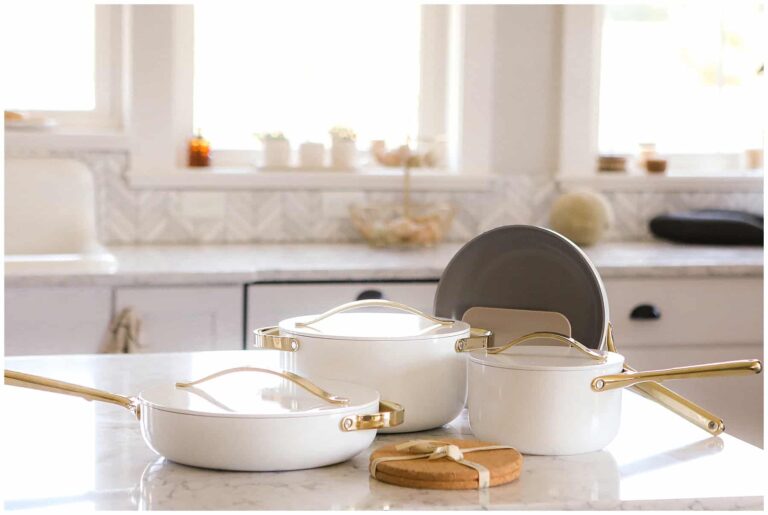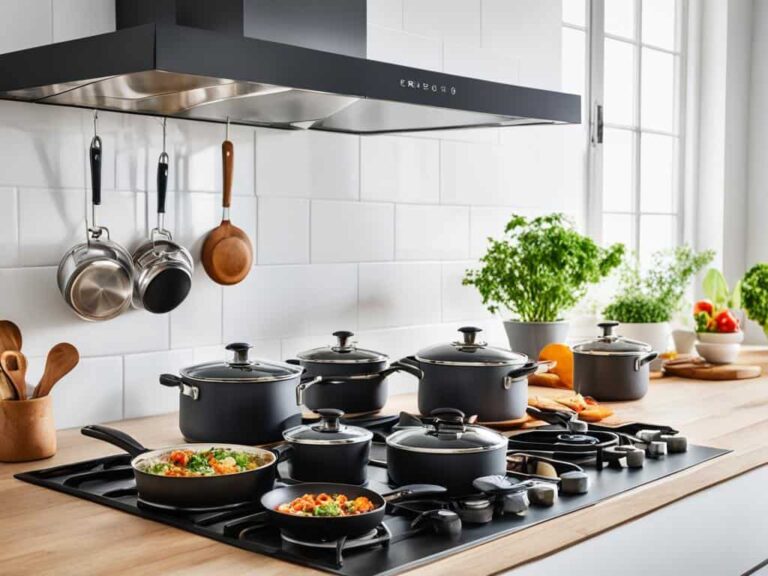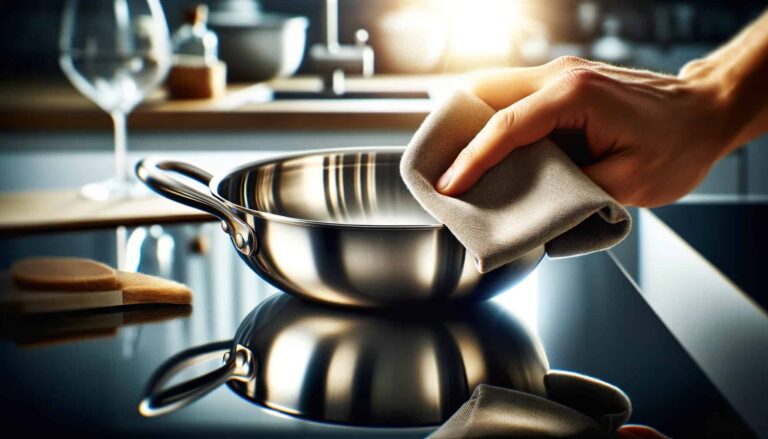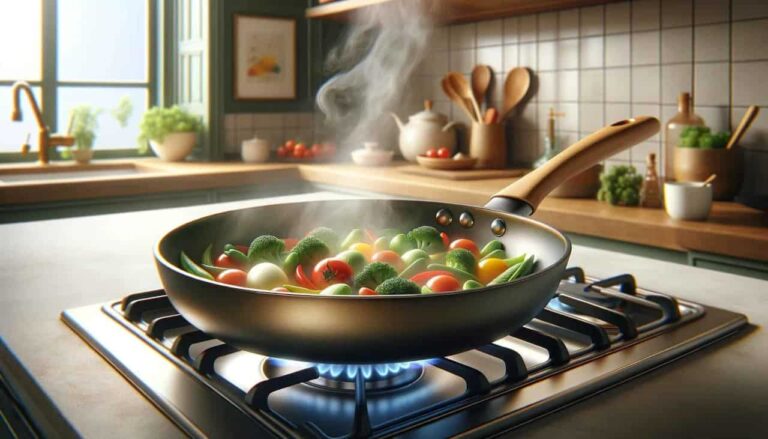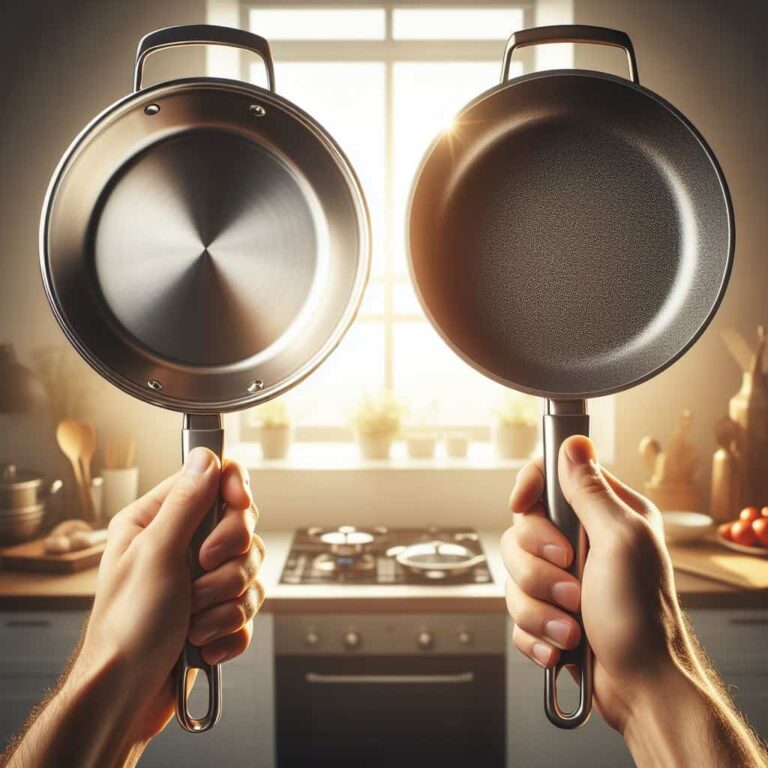Ceramic Cookware on Induction Cooktop: Myth or Magic?
Using ceramic cookware on induction cooktops has been a point of debate among home cooks. Some believe that ceramic is not compatible with induction technology, while others swear by its performance. In this article, we will explore the truth behind using ceramic cookware on induction cooktops and recommend the best options for a seamless cooking experience.
Induction cooktops are all the rage these days, and for good reason. They’re quick, efficient, and cook food evenly thanks to their smart use of electromagnets. This technology transfers energy directly to pots and pans, resulting in quick and even heating. But many people are hesitant to use ceramic cookware on induction cooktops due to the misconception that it is not suitable. The reality is that ceramic cookware can work perfectly fine on induction cooktops if it has a magnetic base.
There are some pretty cool perks to using ceramic cookware on induction cooktops. For starters, it heats up super fast and cooks your food evenly, so you get consistent results every time. Plus, its non-reactive surface means your food’s flavor stays true – perfect for those zesty tomatoes or tangy lemons. And let’s not forget the cleanup – it’s a breeze, since there are no tricky spots for food to hide. And to top it off, ceramic cookware brings a splash of style to your kitchen with its vibrant colors and sleek designs.
Key Takeaways:
- Ceramic cookware can be used on induction cooktops as long as it has a magnetic base.
- Pure ceramic cookware on induction cooktops lacks compatibility due to the absence of a magnetic base.
- Induction cooktops offer fast and even heating, energy efficiency, and easy cleaning.
- Ceramic cookware heats up quickly, cooks food evenly, and preserves natural flavors.
- Ceramic cookware is easy to clean and adds an aesthetic appeal to the kitchen.
- Look for ceramic cookware that is specifically labeled as induction compatible for best results.
How Does Induction Cooking Work?
Unlocking the secrets of ceramic cookware on induction cooktops starts with understanding how induction cooktops work. These stoves work on the principle of electromagnetic induction. When turned on, an alternating electrical current passes through a coil of copper wire that sits under the glass plate of the cooktop. This creates a fluctuating magnetic field above the burner. When a pot or pan with a magnetic base is placed on the cooktop, the magnetic field generates electrical currents within the metal, causing the cookware to heat up and cook the food.
For cookware to be compatible with an induction stove, it must have a magnetic base made of ferrous material like cast iron or certain types of stainless steel, which react to the magnetic field generated by the induction stove.
Non-magnetic materials like aluminum and copper can still be used on induction cooktops if they have a steel or iron plate bonded into them.
Pure Ceramic: An Induction Mismatch
100% pure ceramic cookware, also called stoneware or earthenware, does not contain any ferromagnetic materials. It’s made entirely from ceramic, a non-metallic and non-magnetic material. Since it lacks these necessary magnetic properties, it cannot react to the electromagnetic field created by the induction stove. Therefore, when you place 100% pure ceramic cookware on induction cooktops, the cooktop won’t be able to generate heat in the cookware, rendering it incompatible.
The Role of Bonded Plates
When it comes to non-magnetic materials like aluminum and copper, manufacturers can make them compatible with induction cooktops by bonding a steel or iron plate to the bottom of the cookware. This bonded plate acts as a magnetic interface, allowing the electric current to flow through and heat up the cookware effectively.
Understanding how induction cooking works and the compatibility requirements for ceramic cookware will help you choose the right cookware for your induction cooktop. Now that we know the basics, let’s explore the advantages of using ceramic cookware on induction cooktops in the next section.
Advantages of Using Ceramic Cookware on Induction Cooktops
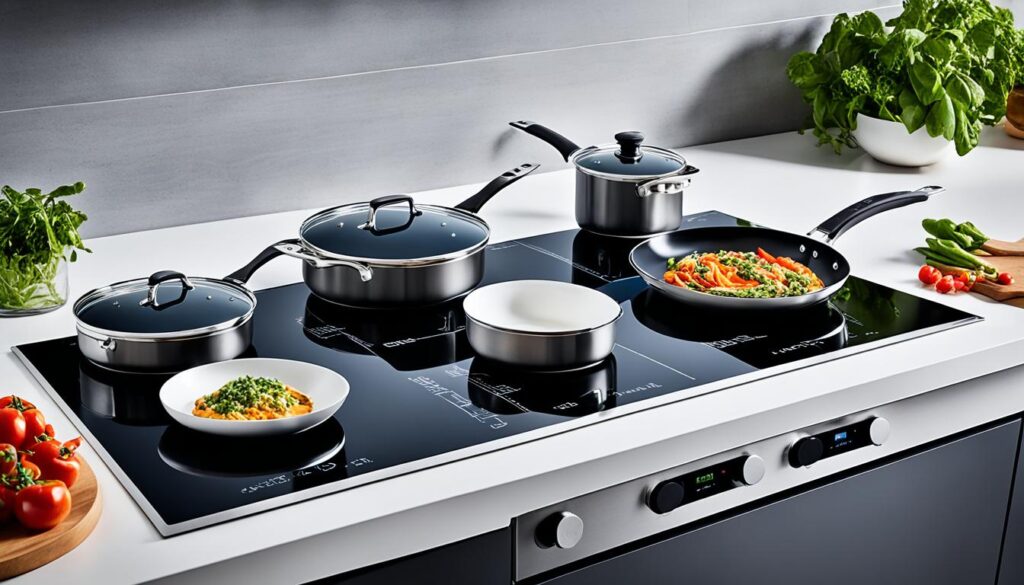
Using ceramic cookware on induction cooktops offers several advantages. The primary advantage is that ceramic cookware is non-toxic, meaning you can cook healthy meals without worrying about harmful chemicals leaching into your food. This is especially important for those who prioritize healthy eating and want to avoid potential toxins like PFOA and PTFE, often found in traditional non-stick coatings.
Secondly, ceramic cookware heats up quickly and evenly, ensuring consistent cooking results. Whether you’re searing a steak or simmering a delicate sauce, ceramic distributes heat efficiently, reducing the risk of hot spots and providing precise temperature control.
Additionally, ceramic is a non-reactive material, meaning it will not interact with acidic or alkaline ingredients. This is particularly important for dishes such as tomato-based sauces or citrus-infused marinades, as it preserves the natural flavors of the food without adding any unwanted metallic tastes.
Ceramic cookware is also easy to clean. Unlike traditional non-stick coatings, ceramic does not have any crevices or corners where food can get stuck. It can be effortlessly wiped clean with a sponge or washed in the dishwasher, saving you time and effort in the kitchen.
Lastly, ceramic cookware adds a touch of elegance to the kitchen with its beautiful and colorful designs. Whether you prefer classic white or vibrant patterns, ceramic pots and pans can enhance the aesthetic appeal of your culinary space.
Quotes:
“Ceramic cookware provides even heat distribution, and its non-reactive nature preserves the natural flavors of the food.” – Chef Emily Johnson
“Cleaning ceramic cookware is a breeze – no need to scrub stubborn stains or worry about food residue getting trapped in crevices.” – Home Cook Magazine
When choosing ceramic cookware for induction cooktops, look for options that have a magnetic base and are specifically labeled as induction compatible. This ensures that the cookware will work efficiently on your induction hob, allowing you to enjoy all the benefits of both technologies.
Recommended Ceramic Cookware for Induction Cooktops
When choosing ceramic cookware for induction cooktops, it’s crucial to opt for ceramic-coated varieties rather than 100% pure ceramic. Pure ceramic, lacking a metal base, is not compatible with induction cooktops. For induction cooking, your cookware must have a magnetic base. The top ceramic-coated brands we recommend in our Best Ceramic Cookware guide, include options that are induction-ready:
- Caraway – Caraway’s ceramic cookware is indeed compatible with induction stovetops. They specify that their pans have different base diameters to cater to various sizes of induction cooktops, but also recommend checking with your induction stove manufacturer to ensure compatibility.
- Green Pan – Green Pan’s Valencia Pro series features a Magneto base that is compatible with all stovetops, including induction. This compatibility is a result of their careful design and choice of materials.
- Our Place – The ceramic cookware products offered by Our Place, including the very popular Always Pan, are compatible with induction cooktops.
These are just a few examples of top-rated ceramic cookware options for induction cooktops. When choosing ceramic cookware, always look for options that are labeled as induction compatible and have a magnetic base. With the right ceramic cookware, you can enjoy the benefits of induction cooking on your cooktop while preparing delicious meals.
Conclusion
Ceramic cookware can be used on induction cooktops as long as it has a magnetic base. Make sure to select ceramic-coated pots and pans that are specifically labeled as induction compatible.
With the right ceramic cookware, you can enjoy a seamless cooking experience on your induction cooktop. Whether you’re simmering a flavorful stew or sautéing vegetables, ceramic cookware’s compatibility with induction cooktops ensures that you can achieve delicious results with ease and efficiency. Invest in high-quality ceramic cookware that is induction compatible to elevate your cooking experience and make the most out of your induction cooktop’s capabilities.
Frequently Asked Questions
Why is ceramic cookware a good option for induction cooktops?
Ceramic cookware heats up quickly and evenly, offers non-reactive cooking surfaces, is easy to clean, and durable. It also adds a touch of elegance to the kitchen with its beautiful designs.
What types of ceramic cookware are suitable for induction cooktops?
Frying pans, skillets, woks, stock pots, and cookware sets with a magnetic base and induction compatibility are suitable for induction cooktops.
What should I look for when selecting ceramic cookware for induction cooktops?
When choosing ceramic cookware for induction cooktops, make sure to select options that have a magnetic base and are specifically labeled as induction compatible.
Can I use any ceramic cookware on an induction cooktop?
No, only ceramic cookware with a magnetic base or a steel or iron plate bonded into it can be used on induction cooktops.


